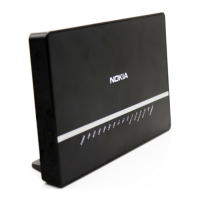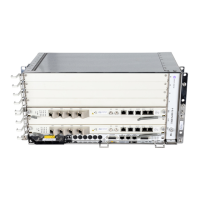FD 100/320Gbps NT and FX NT IHub Services Guide Virtual Private LAN Service
Issue: 13 3HH-11985-AAAA-TQZZA 253
5.16.2.2 def-mesh-vc-id
Table 125 def-mesh-vc-id command
5.16.2.3 disable-aging
Table 126 disable-aging command
Item Description
Syntax def-mesh-vc-id vc-id
no disable-learning [vc-id]
Context configure>service>vpls
Description This command configures the value used by each end of a tunnel to identify the VC. If this
command is not configured, then the service ID value is used as the VC-ID.
This VC-ID is used instead of a label to identify a virtual circuit.The VC-ID is significant between
peer ISAMs on the same hierarchical level. The value of a VC-ID is conceptually independent
from the value of the label or any other datalink specific information of the VC.
The no form of this command disables the VC-ID.
Default None
Parameter vc-id - The virtual circuit ID.
Values: 1...4294967295
Item Description
Syntax [no] disable-aging
Context configure>service>vpls
config>service>pw-template
Description This command disables MAC address aging across a VPLS service or on a VPLS service SAP
or spoke SDP.
Like in a Layer 2 switch, learned MACs can be aged out if no packets are sourced from the
MAC address for a period of time (the aging time). In each VPLS service instance, there are
independent aging timers for local learned MAC and remote learned MAC entries in the VPLS
forwarding database (FDB). The disable-aging command turns off aging for local and remote
learned MAC addresses.
When no disable-aging is specified for a VPLS, it is possible to disable aging for specific
SAPs and/or spoke SDPs by entering the disable-aging command at the appropriate level.
When the disable-aging command is entered at the VPLS level, the disable-aging state of
individual SAPs or SDPs will be ignored.
The no form of this command enables aging on the VPLS service.
Default no disable-aging

